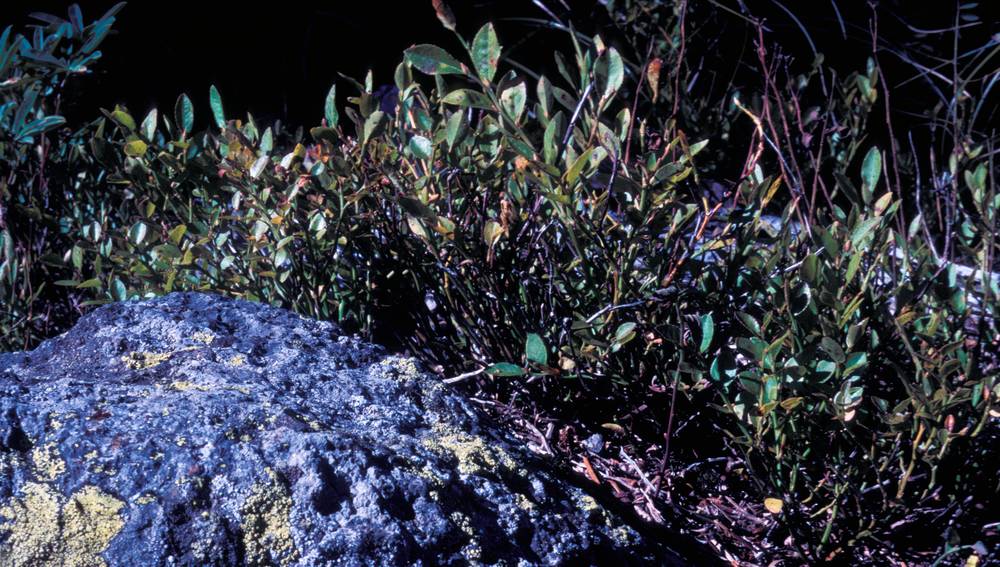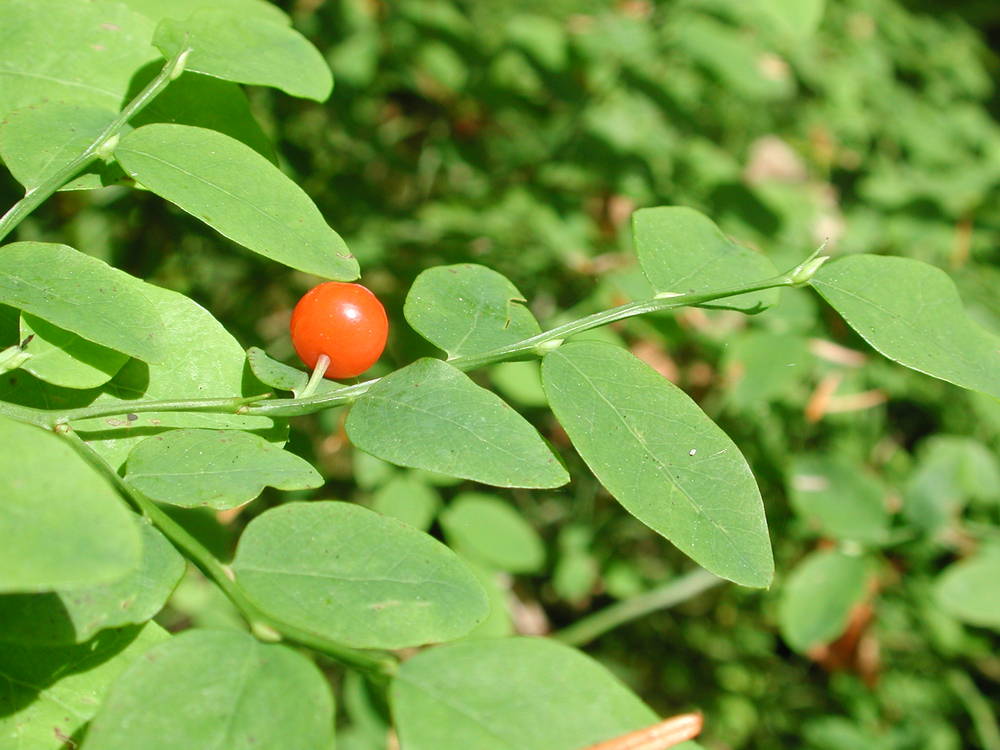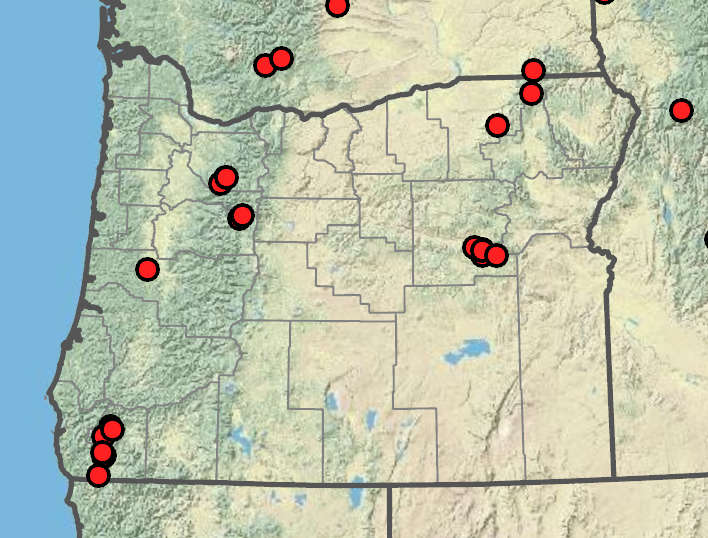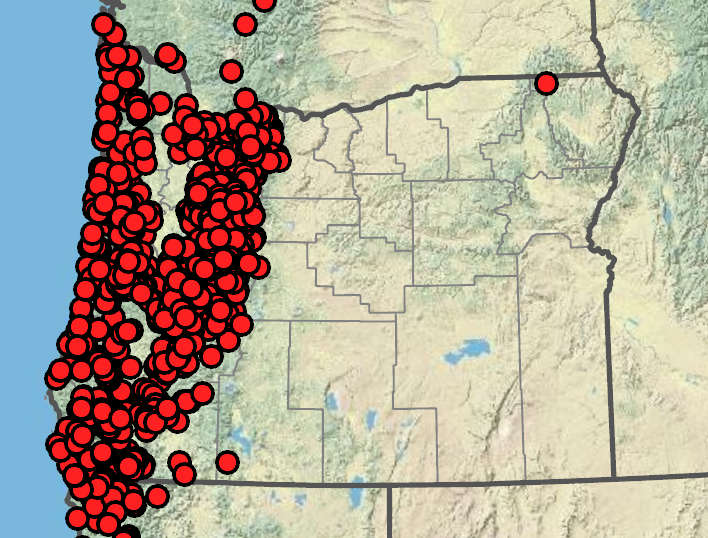Vaccinium myrtillus
Vaccinium parvifolium
whortleberry
red huckleberry
elliptic to ovate, 11–20(30) × 5–10 mm, light green abaxially, green adaxially; thin; flexible;
margins sharply serrate from tips to near base, prominently veined;
tips acute;
surfaces abaxially glandular, adaxially glabrous.
ovate to oblong-elliptic, 10–30 × 4–18 mm; thin;
margins usually entire, rarely minutely serrate;
tips usually rounded or sometimes acute;
surfaces abaxially glabrous to somewhat puberulent, adaxially glabrous but sometimes minutely puberulent along midrib.
solitary flowers in axils.
solitary flowers in axils.
sepals 5;
calyces shallowly lobed, glabrous;
petals 5;
corollas ovoid-urceolate to globose, 3–7 × 4–7 mm, white to pink, glaucous;
filaments glabrous.
sepals 5;
calyx lobes green, glabrous;
petals 5;
corollas globose to urceolate, 4–6 × 3–5 mm; greenish yellow to pink, glaucous;
filaments ? anthers, glabrous.
4–9 mm in diameter, dark red to bluish black; without a bloom.
6–10 mm in diameter, red, with a faint bloom.
=24, 48.
=24.
Vaccinium myrtillus
Vaccinium parvifolium
Wet mid- to high elevation areas. Flowering Apr–Jul. 1100–2100 m. BW, Casc, Sisk. ID, NV, WA; northeast to Alberta and southeast to NM, Greenland; Asia, Europe. Native.
Morphologically, Vaccinium myrtillus is similar to V. scoparium, and at higher elevations their ranges overlap. Vaccinium myrtillus differs from V. scoparium by its generally larger leaves and flowers, often sparsely puberulent twigs, and its broom-like habit.
Coniferous forests, often on decaying wood. Flowering Mar–Jul. 0–1600 m. Casc, CR, Est, Sisk, WV. CA, WA; north to AK. Native.
Some old, semi-evergreen leaves of V. parvifolium may be minutely serrate and shiny, while most leaves are entire and dull. Thus, when using the above key, care must be taken to examine younger leaves for proper identification.
Stephen Meyers
Stephen Meyers
- Local floras:
BC,
OR,
WA
- Local Web sites:
Flora NW,
PNW Herbaria
WildflowerSearch
iNaturalist (observations)
USDA Plants Database
- LBJ Wildflower Center
- SEINet
- Plants of the World Online
- Encyclopedia of Life
- Wikipedia
- Google Image Search
- Local floras:
BC,
CA,
OR,
WA
- Local Web sites:
CalFlora,
CalPhotos,
Flora NW,
PNW Herbaria,
Turner Photog.
WildflowerSearch
iNaturalist (observations)
USDA Plants Database
- LBJ Wildflower Center
- SEINet
- Plants of the World Online
- Encyclopedia of Life
- Wikipedia
- Google Image Search





